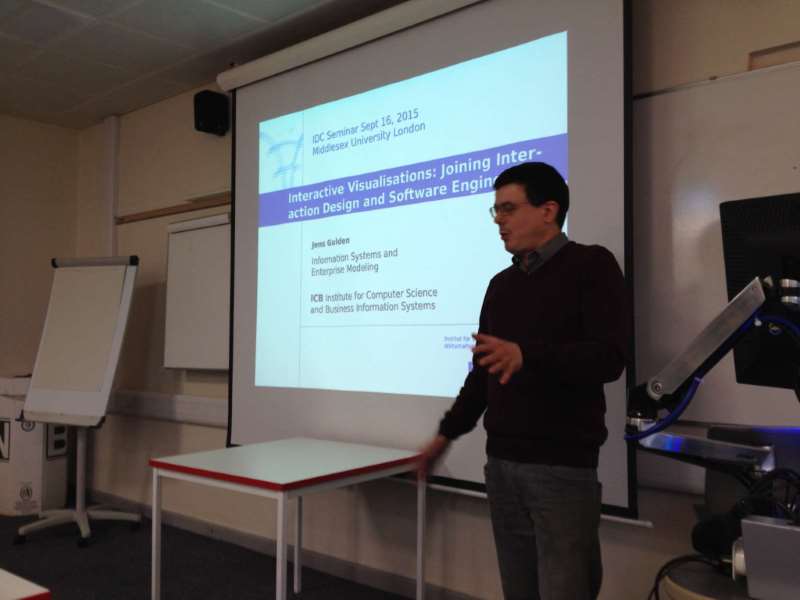Dr. Jens Gulden,
Assistant professor in Information Systems at University of Duisburg-Essen
 Interactive visualizations are growingly demanded for gaining meaningful insight into more and more available data. Research in the fields of interaction design and others has resulted in reflections on visualization principles and design guidelines for making information visually accessible to humans in a cognitively efficient way. It is highly desirable to incorporate this knowledge into the design of software systems and they interaction capabilities with human users.
Interactive visualizations are growingly demanded for gaining meaningful insight into more and more available data. Research in the fields of interaction design and others has resulted in reflections on visualization principles and design guidelines for making information visually accessible to humans in a cognitively efficient way. It is highly desirable to incorporate this knowledge into the design of software systems and they interaction capabilities with human users.
However, current realizations of interactive visualizations available as executable software components, e. g., as part of business intelligence reporting systems, or as Flash-objects embedded in a web page, require time-consuming and costly software development efforts. This is because every new visualization has to be created using low-level generic programming languages that control the graphical rendering, e. g., ActionScript for Flash-objects, or JavaScript for dynamic HTML.
To examine an approach which significantly reduces this development effort, the presentation sketches the idea of identifying general principles for designing interactive visualisation software, and abstracting them to formal concepts that can be expressed as a model. From such a model, implementations of software components that provide appropriate rendering capabilities and navigation functionality can be (semi-)automatically derived using known model-driven software development techniques.
Presentation slides
About the speaker
Dr Jens Gulden has graduated in Information Systems and Philosophy. Since 2013, he fills the position of an assistant professor in Information Systems at University of Duisburg-Essen, Germany. Before this, he was affiliated with Free University Berlin, Technical University Berlin, and others. His research covers methodologies for innovative development and management of socio-technical systems, including conceptual modelling and domain-specific modelling language design, with a strong focus on visually expressing knowledge using diagrams and other forms of non-linguistic means of expression.

Leave a Reply